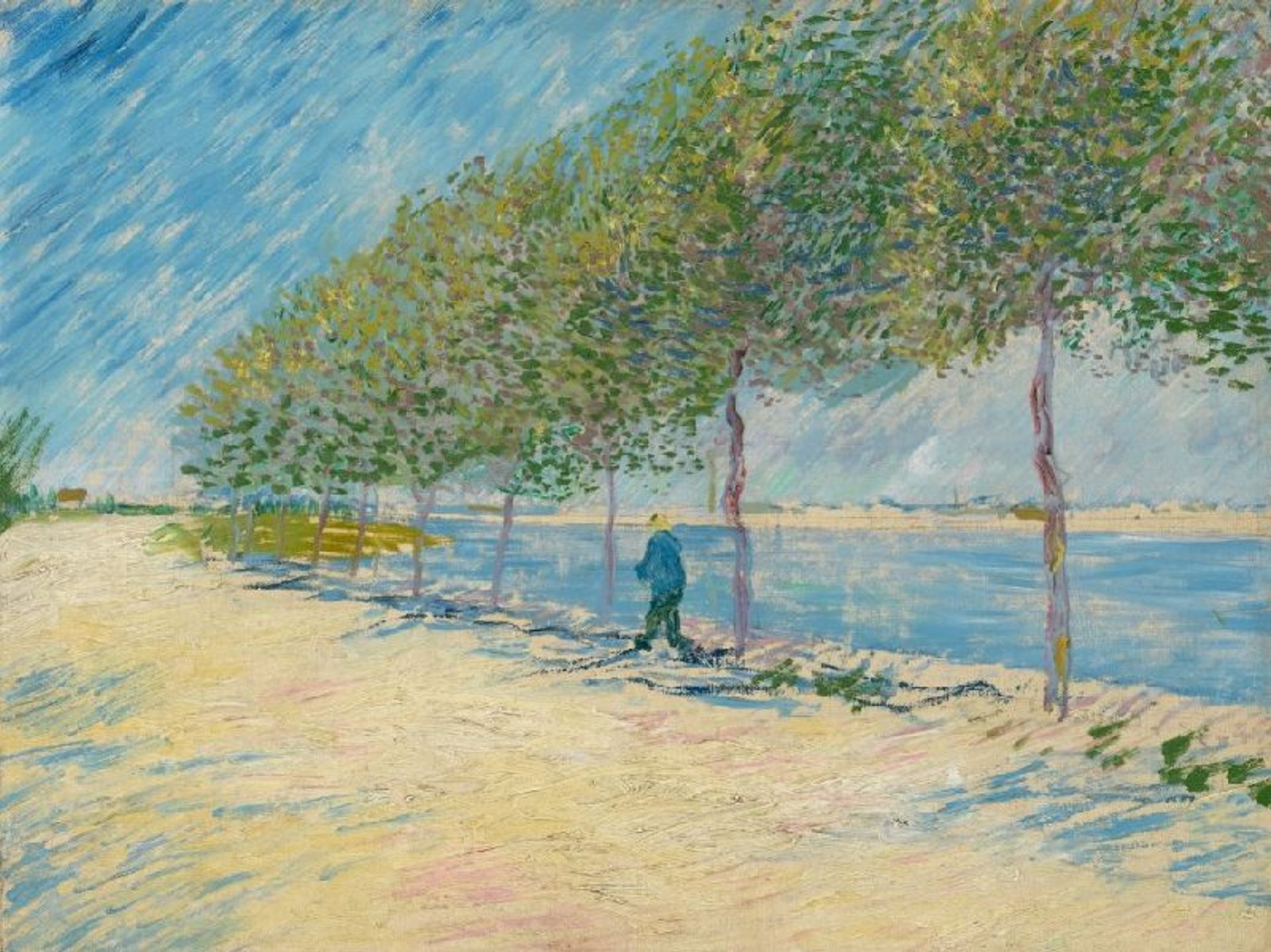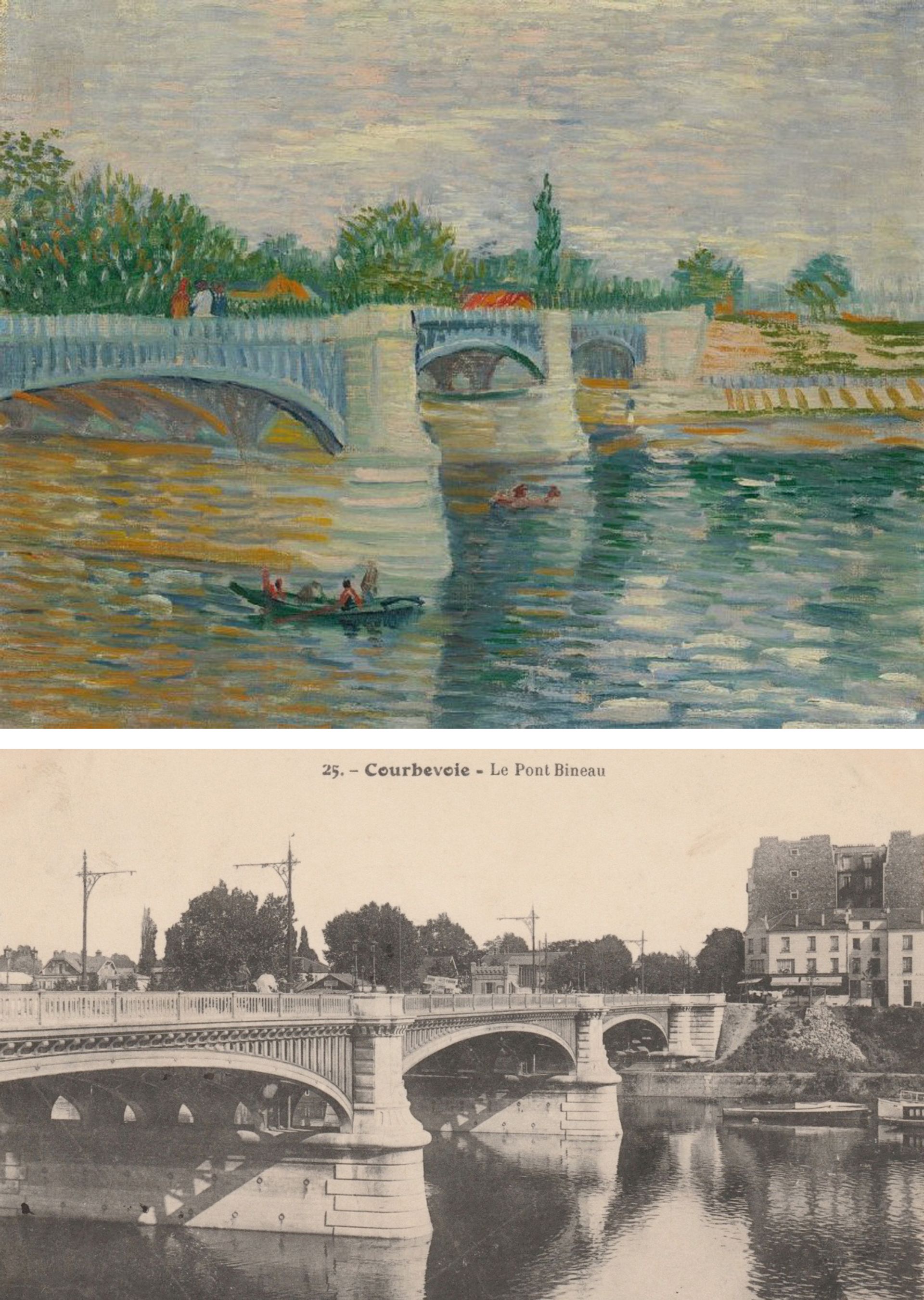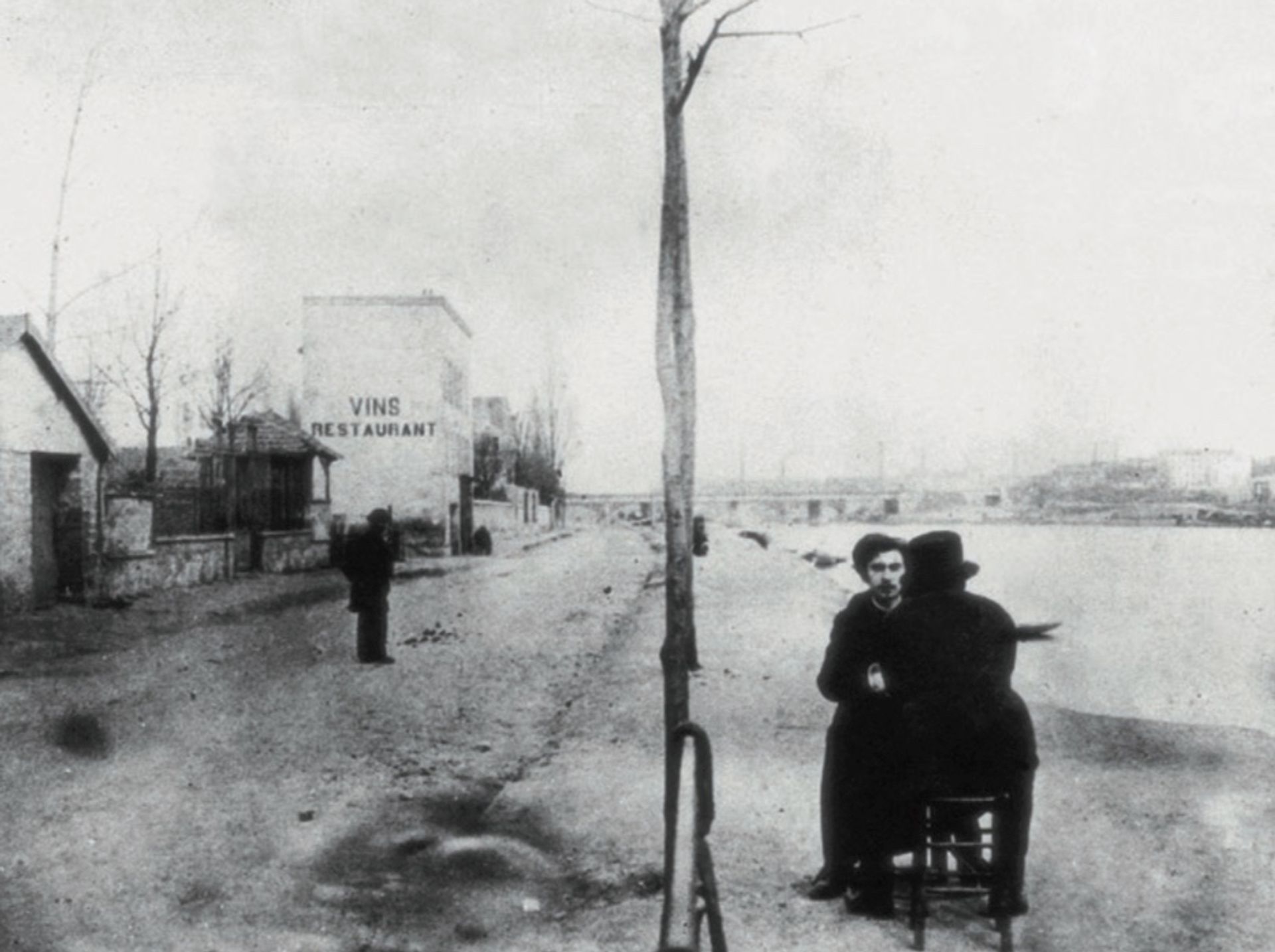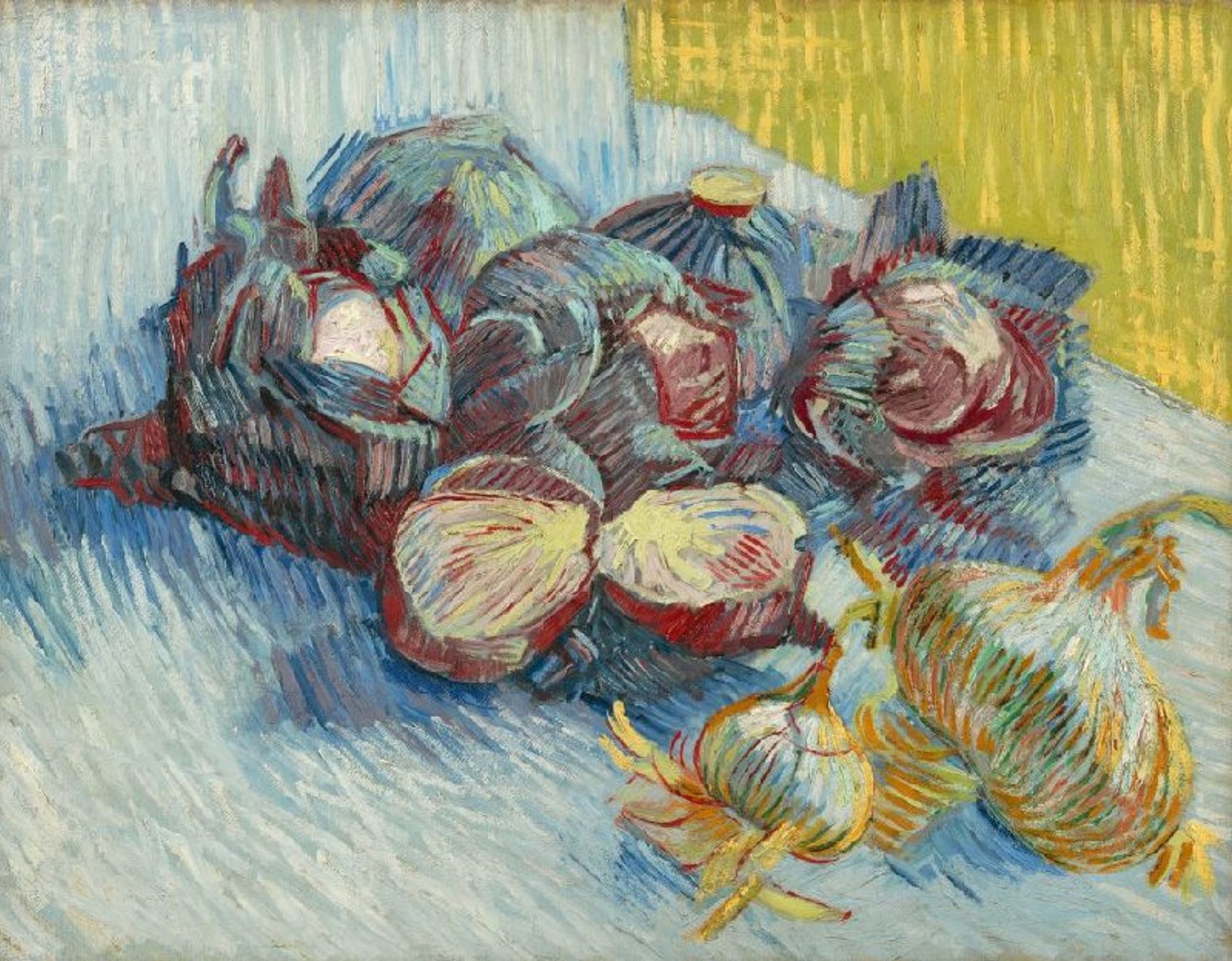Van Gogh and the Avant-Garde: The Modern Landscape (14 May-4 September) opens at the Art Institute of Chicago. Afterwards it goes to the Van Gogh Museum in Amsterdam (13 October-14 January 2024), where it will be presented under a different title, Van Gogh along the Seine.

Van Gogh’s By the Seine (May-July 1887)
Credit: Van Gogh Museum, Amsterdam (Vincent van Gogh Foundation)
Van Gogh is the star of the show, but he will be exhibited alongside four of his avant-garde colleagues: Georges Seurat, Paul Signac, Emile Bernard and Charles Angrand. Although they essentially worked as individuals, not as a coherent group, all five artists chose to paint in the same area in the northwest outskirts of Paris, around the suburb of Asnières (and nearby Courbevoie and Clichy) on the River Seine.
What unified them was their search for new, modern painting styles. While working differently, all were determined to break with tradition.
The show, curated by Bregje Gerritse (Van Gogh Museum) and Jacquelyn Coutré (Art Institute of Chicago), includes 24 Van Gogh paintings and five drawings, along with over 50 works by the other artists.
Research for the exhibition reveals that Van Gogh began painting around Asnières in early May (or possibly late April) 1887, a few weeks earlier than had been assumed. By the end of July, when he ended his campaign, he had completed around 40 paintings - nearly one every two days.

Van Gogh’s The Bridge at Courbevoie (May-July 1887) / Courbevoie - the Bineau Bridge (postcard) (around 1910)
Painting: Van Gogh Museum, Amsterdam (Vincent van Gogh Foundation)
In travelling to this suburban area on the Seine, Van Gogh was consciously following in the footsteps of his colleagues, Seurat, Signac, Bernard and Angrand, who had been working there earlier. Vincent was then living with his brother Theo in Montmartre, and Asnières was about five kilometres away. A fast walker, he would get there in an hour, laden down with his equipment.
Signac later recalled: “We painted on the banks of the river, lunched at the guinguette [an outdoor café], and returned to Paris on foot, along the avenues of Saint-Ouen and Clichy. Van Gogh wore a blue zinc worker’s smock and had painted dots of colour on the sleeves.”
Around Asnières Van Gogh focussed on its riverside: bridges, factories with their smoking chimneys, sailboats, reflections in the water, islands, open spaces where Parisians would flock to promenade, and popular restaurants. At weekends the area became crowded with Parisians seeking a relaxing day out of the city.

Photograph of Emile Bernard and Van Gogh (from behind) outside the wine merchant Huybert Tericeux at 6 quai de Seine, Courbevoie (1886-87)
Credit: private collection
The only surviving photograph of Van Gogh, other than one taken when he was 19, shows him from behind, talking with his artist friend Emile Bernard at a riverside café. Its location has just been identified: it was outside the premises of the wine merchant Huybert Tericeux, at 6 quai de Seine, Courbevoie, slightly upstream from Asnières.
Bernard, who was Van Gogh’s closest friend, lived with his parents in Asnières. However, during Van Gogh’s painting campaign in May-July 1887 Bernard was away in Brittany. So although Van Gogh would later sometimes work in his friend’s Asnières studio, surprisingly they do not seem to have actually painted together by the riverside.
The pinnacle of Van Gogh’s success with his Seine motifs were three triptychs, sets of landscape paintings which were designed to each hang together. These can be identified by red painted borders which the artist included. The latest research suggests that the three separate triptychs depict scenes on the island of La Grand Jatte and around Asnières and Clichy.

Top to bottom: Fishing in Spring, the Pont de Clichy (Asnières), A Woman Walking in a Garden and River Bank in Springtime (all May-July 1887)
Credits: Art Institute of Chicago (gift of Charles Deering McCormick, Brooks McCormick and the Estate of Roger McCormick), private collection and Dallas Museum of Art (gift of Mr. and Mrs. Eugene McDermott in memory of Arthur Berger)
The nine individual paintings from the triptychs are now scattered in different collections around the world. Seven are being borrowed for Chicago and eight for Amsterdam, a tremendous coup. Frustratingly, View of the Seine with Rowboats (May-July 1887), now in a private collection, was unavailable for loan.
The exhibition emphasises that it was around Asnières that Van Gogh took decisive steps towards the exuberant style with powerful colours that he would develop the following year in Provence. As Bernard later commented on his friend’s Seine paintings: “This was Van Gogh’s prelude to the symphonies of his future palette, he was trying out his instruments.”
Other Van Gogh news:

Van Gogh’s Red Cabbages and Garlic (October-November 1887)
Credit: Van Gogh Museum, Amsterdam (Vincent van Gogh Foundation)
The Van Gogh Museum has renamed one of its still lifes (October-November 1887), now calling it Red Cabbages and Garlic (previously the second vegetable had been described as Onions). As Sarah Cascone recorded for Artnet News, the change came after a Dutch chef (and artist), Ernst de Witte, contacted the museum to explain that Van Gogh had depicted cloves of garlic.



